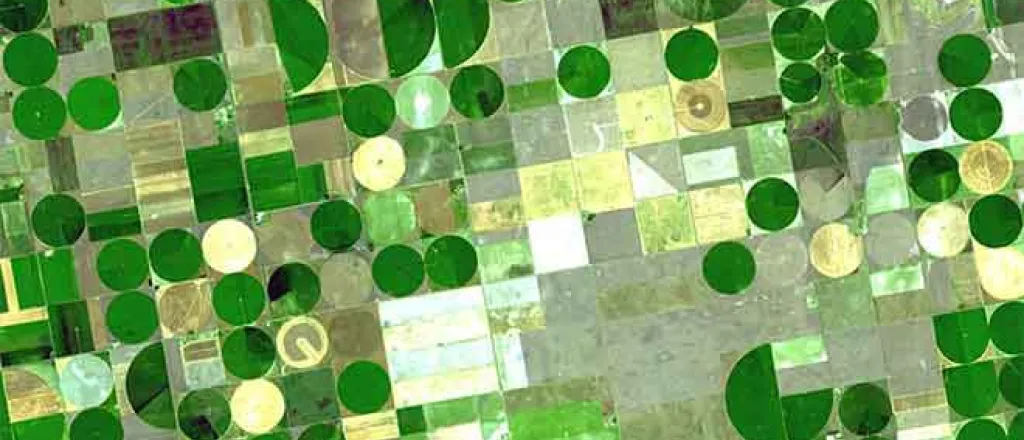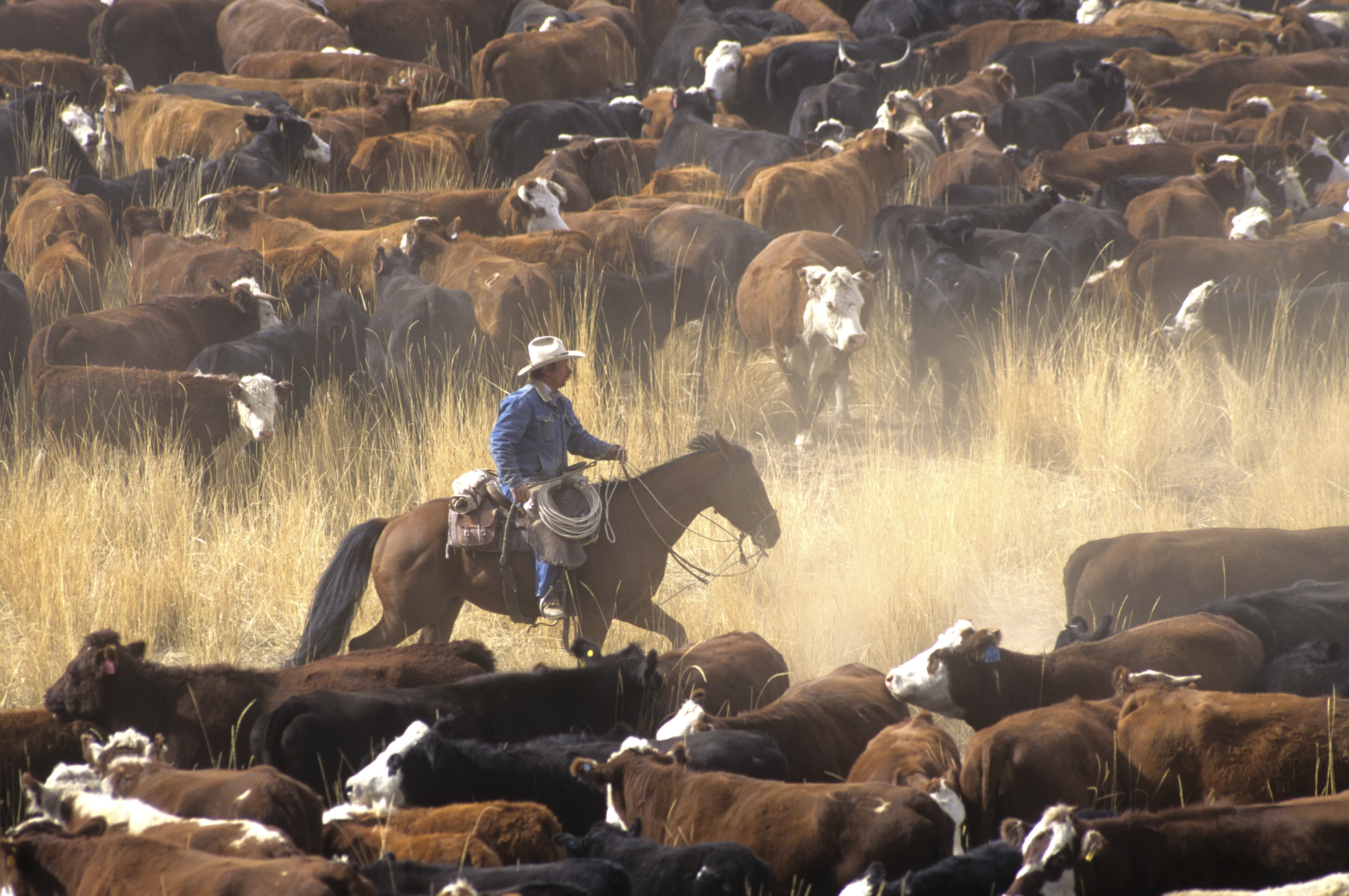
Biochar's rise on farms could help capture more carbon
(Big Sky Connection) On the day the Tigercat carbonator - a machine that looks like a giant metal dumpster mounted on Snowcat-style treads - arrived in western Montana from Oregon, Michael Schaedel set to work navigating "a colossus" over narrow, rolling forest roads.
As a forester for the Nature Conservancy, Schaedel works to thin and restore 500,000 acres of former industrial timberland to make it more resistant to wildfires. And he collects debris and burns it in piles so that it doesn't become fuel for future fires. It's a common practice, but it releases carbon dioxide into the atmosphere. So he and others are looking to the carbonator-which burns the material in a way that traps carbon and creates a product called biochar-instead.
After two weeks of trying it out, he was impressed with the results. His team was burning debris that would fill 60-80 dump trucks daily with little to no smoke. But the second half of their plan is bound to be more difficult. Schaedel's team hopes convince western Montana farmers to take the biochar and add it to their soils.
It should be a relatively easy sell, as a growing body of research suggests that biochar might just be the most versatile soil health tool available-and an important climate solution. Biochar particles are incredibly porous, creating nooks and crannies that hold onto excess nutrients, water, and microbes. Adding them to fields can reduce nitrogen and phosphorous runoff that pollutes waterways, help soil retain moisture in drought-stricken areas, and stimulate microbial activity. Most importantly, biochar is one of the most stable, long-lasting forms of carbon available. In the right conditions, it can last hundreds-and even thousands-of years, potentially holding on to significant amounts of carbon dioxide that would otherwise end up in the atmosphere.
"The evidence is very strong that it's the best approach [to carbon sequestration]," said Chuck Hassebrook, head of the National Center for Appropriate Technology's (NCAT) Biochar Policy Project. "But it's not something we can turn around and do tomorrow at scale. We don't have the biochar production facilities, and there are knowledge gaps that we need to fill."
Now, this little-known tool may receive a boost in Washington. In 2022, lawmakers in both houses of Congress introduced the Biochar Research Network Act. And if it passes, the legislation would set up a national network of up to 20 research sites focused on biochar as a climate solution on farms.
"We know that biochar amendments improve the quality of soil and that, in turn, has positive benefits to drawing down carbon," said LaKisha Odom, the scientific director for soil health at the Foundation for Food & Agriculture Research (FFAR), which hosted an event dedicated to biochar research and commercialization in partnership with NCAT and American Farmland Trust (AFT) in March. "But there is additional research needed . . . to really provide solutions and recommendations to farmers and ranchers."
Biochar is a form of charcoal, made through a process called pyrolysis, that involves heating organic biomass while depriving it of oxygen.
In Montana, the carbonator, burns limbs, branches, and small trees in a fiery box, where a fan blows air downward continuously, accelerating the burn and keeping the smoke down, Schaedel explained. As the charred wood particles burn and get smaller, they drop into water, which stops the burn. The final product is biochar.
Self-proclaimed hippie homesteader Dale Hendricks doesn't have an expensive machine, and prefers to make biochar in metal barrels.
Hendricks grows and sells native plants, proselytizes about permaculture, and has been making his own biochar in southeastern Pennsylvania since 2009. He sprinkles it in his chicken coop to reduce the smell of the manure and adds it to his compost continuously, where it helps create carbon-rich, vibrant soil that helps plants thrive.
But Hendricks and others say the hype around biochar as a climate silver bullet has sometimes led to the opposite effect: Many farmers and scientists discount it entirely. "Please don't let the idea get out there that there are fanatics that think char is going to save the world," he said. "We want it to take its place as a tool. It's great, long-term, practically permanent structural soil improvement."
Especially in drought-prone areas, there is strong evidence that biochar can improve how much water soils hold, said Deborah Page-Dumroese, who has been studying the practice for 12 years as part of her research on forest resilience in Colorado. And given the intensity and length of recent droughts in the West, the impacts they're already having on agriculture, and the fact that the trend is likely to continue, that's no small thing.
"We're also pretty confident that forest-made biochar could be used in places like feedlots to absorb manure and contaminants in the manure," she said, "and that biochar can improve the forage capabilities of pastureland."
Interest in those agricultural uses appears to be picking up steam. In September, the U.S. Department of Agriculture (USDA) named the U.S. Biochar Initiative (USBI) is a partner in a $30 million effort to lower the carbon footprint of beef.
As for biochar's ability to draw more carbon into the ground, studies have shown that it remained stable in the Terra Preta soils of the Amazon basin for thousands of years. But the fact that the carbon can stay stable for that length of time doesn't mean it will.
How long it stays in place depends on the size of the particles and the texture of the soil, Page-Dumroese said. Farm practices like tillage might disturb it, too. And because the particles hold onto nitrogen, there is a limit to how much can be applied to the soil before the biochar competes with the plants for nutrients.
In the latest report from the UN's Intergovernmental Panel on Climate Change (IPCC), the expert authors used the word biochar 188 times and conclude that it "has significant mitigation." Project Drawdown estimates that widespread use of biochar as a soil amendment could reduce global emissions by between 1.3 and 3 gigatons of CO2 equivalent per year by 2050, which is slightly more significant than the potential impact of scaling up ocean power and slightly less than increasing the number of hybrid cars on the road by around 20 fold.
However, those estimations are based on the production of between 63 and 188 million metric tons of biochar globally, and production capacity as a major limitation.
Statistics about the size of U.S. biochar industry are hard to come by, but Miles, head of USBI estimates that there are about 150 commercial producers in the country, creating between 70,000 and 100,000 tons per year-a drop in the bucket of the 63 million tons needed.
Most of the biochar being produced in the U.S. is a byproduct of biomass energy plants. But low-cost natural gas has eroded the market for biomass energy, Miles said, challenging the industry's ability to grow. And cost is not just an issue for the big producers.
In Pennsylvania, Sparks Topsoil & Mulch, one of the only companies making biochar at a commercial scale in the region, recently stopped. According to a spokesperson, production costs were so high the company was not breaking even.
One way to cut production costs is to avoid transporting the materials, which is why Page-Dumroese and Schaedel have both focused on "in-forest" production. But Schaedel said getting more farmers on board with using it could also help. "Costs could come down if there was a reliable market," he said.
Still, Schaedel discovered logistical headaches with his approach. The carbonator uses a lot of water, which he had to have trucked in each day. And although he has no shortage of accessible wood to burn, it's not clear whether there is enough materials available to produce biochar at a scale that will reduce emissions at any significant. Back in 2016, the U.S. Department of Energy's researchers calculated that the country could have an estimated billion tons of biomass available annually to put toward biomass energy and the production of biochar and other similar products.
In addition to forest slash piles and crop residues, biochar can be made with some food waste and animal manure. But depending on what it's made from, its properties change.
With that potential and the impacts of the climate crisis in mind, Hassebrook said it's long past time to commit "major federal dollars" to practical research that will enable farmers to begin using biochar at a meaningful scale. He says the agency has already proposed adding the use of biochar as a soil amendment as an approved practice under one of its major conservation programs, which will allow farmers to apply for funding to help defray the costs of using it on their fields.
But the Biochar Research Network Act would push biochar forward as an agricultural climate solution in a new way. And as farm bill negotiations heat up, many conservation and farm groups will be pushing for expanding farmers access to the practice.
The Department of Energy also has funds to invest in bioenergy facilities and Hassebrook said. his group is urging the department to "put some weight on the benefits of biochar co-produced with fuel and trying to ratchet up the priority on funding more pilot and demonstration facilities."
In the meantime, states are also investing funding in biochar as a soil amendment. For example, Schaedel's project was partially funded by a $288,000 grant from the state of Montana.
Now that the production phase of the experiment is finished, 120 cubic yards of biochar are sitting in the Montana woods under a blanket of fresh snow. Come spring, his team will transport it to the farms where farmers have agreed to do field trials on pastures and croplands. "That's the exciting part-actually getting this product out of the woods and into the fields," he said. "Our hope here is to really demonstrate the potential in Western Montana." In order to scale its impact as a climate solution, that momentum will need to spread to agricultural regions coast to coast.
















